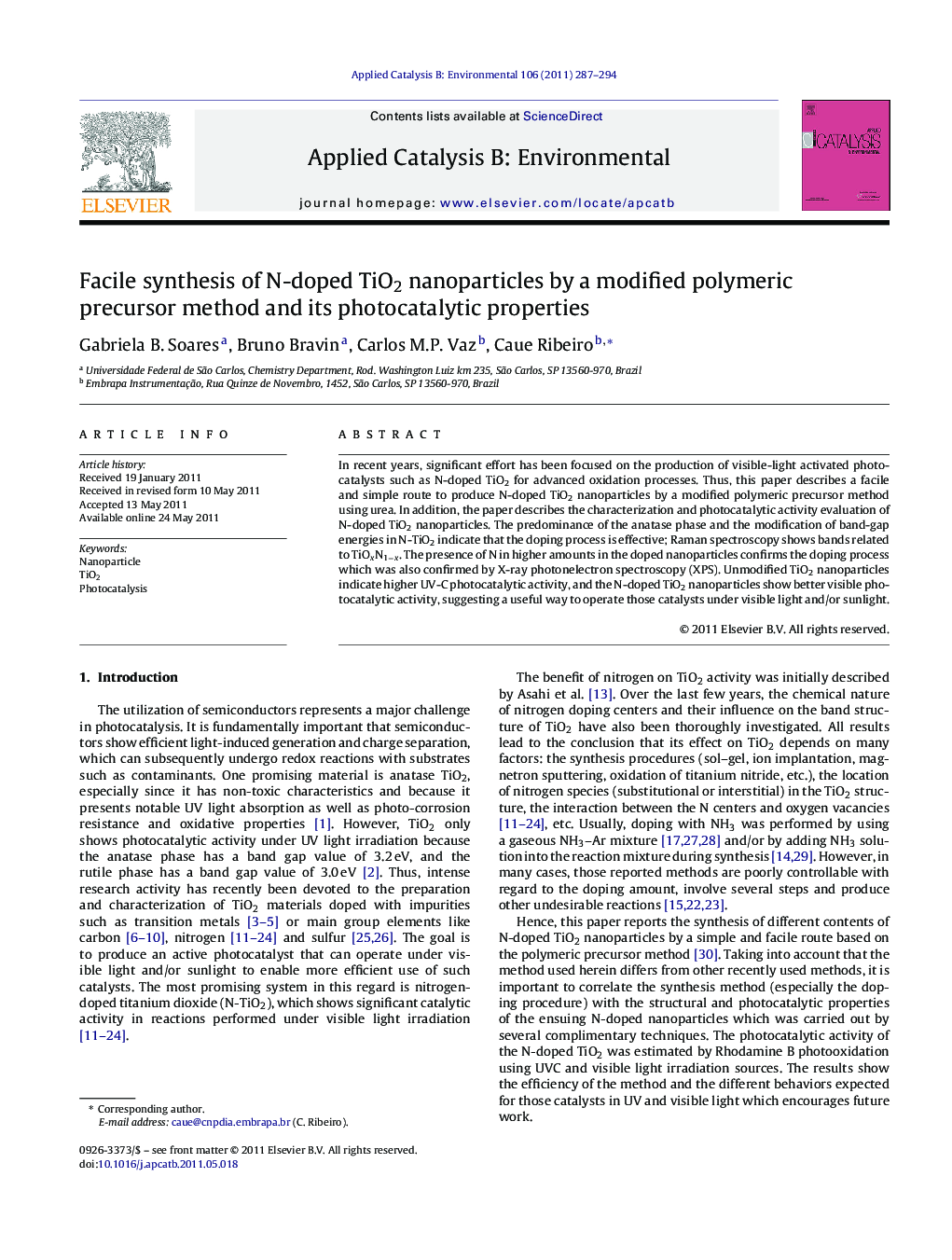| Article ID | Journal | Published Year | Pages | File Type |
|---|---|---|---|---|
| 46904 | Applied Catalysis B: Environmental | 2011 | 8 Pages |
In recent years, significant effort has been focused on the production of visible-light activated photocatalysts such as N-doped TiO2 for advanced oxidation processes. Thus, this paper describes a facile and simple route to produce N-doped TiO2 nanoparticles by a modified polymeric precursor method using urea. In addition, the paper describes the characterization and photocatalytic activity evaluation of N-doped TiO2 nanoparticles. The predominance of the anatase phase and the modification of band-gap energies in N-TiO2 indicate that the doping process is effective; Raman spectroscopy shows bands related to TiOxN1−x. The presence of N in higher amounts in the doped nanoparticles confirms the doping process which was also confirmed by X-ray photonelectron spectroscopy (XPS). Unmodified TiO2 nanoparticles indicate higher UV-C photocatalytic activity, and the N-doped TiO2 nanoparticles show better visible photocatalytic activity, suggesting a useful way to operate those catalysts under visible light and/or sunlight.
Graphical abstractFigure optionsDownload full-size imageDownload as PowerPoint slideHighlights► A facile and simple route to produce N-doped TiO2 nanoparticles using urea was described. ► Characterization results indicated that the doping process was effective. ► Unmodified TiO2 nanoparticles indicated higher UV-C photocatalytic activity than doped ones. ► The N-doped TiO2 nanoparticles showed better visible photocatalytic activity than in UV light.
